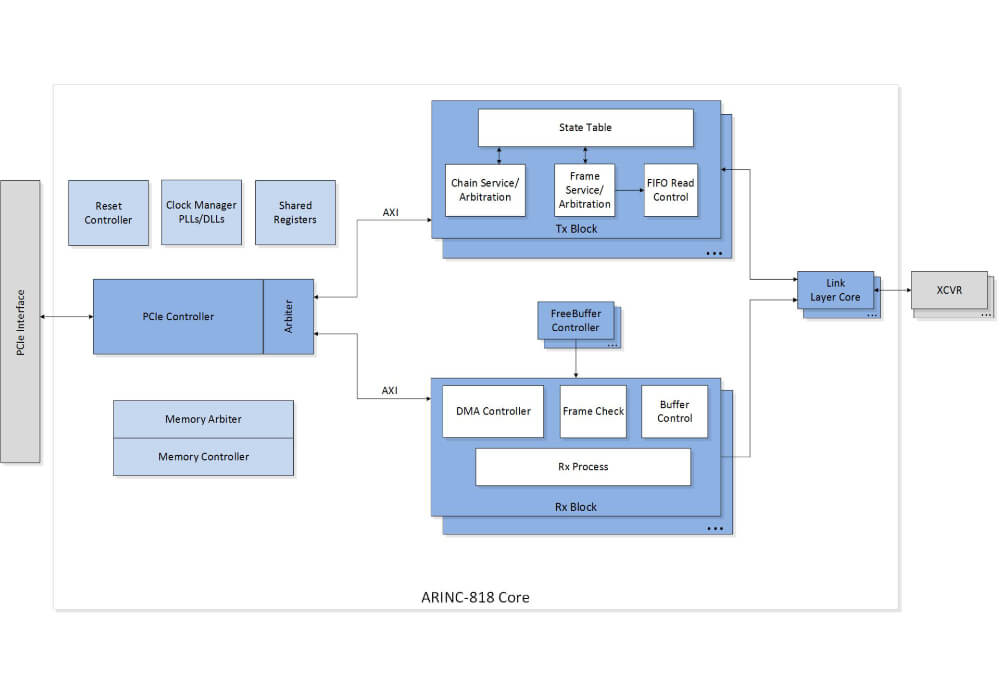ARINC 818 Streaming IP Core
ARINC 818 is a point-to-point serial protocol primarily used in avionics applications and supports the transmission of video, audio, and data. It is a flexible protocol that supports a wide variety of data rates and image formats.
The New Wave Design ARINC 818 Streaming core is an IP block that allows an FPGA to easily interface with an ARINC 818 input or output. It converts the ARINC 818 data stream to/from a parallel pixel bus to facilitate the development of custom FPGA logic. The core handles all aspects of maintaining the ARINC 818 link: encoding/decoding, delimiter insertion/removal, and transmission of idles.
Video parameters (resolution, pixel depth, etc.) are user modifiable and the core can be configured to cover a wide range of possible ICDs. The core also features a built in timing engine that automatically regulates timing characteristics (Frame Rate, Line Rate, etc.) to user specification. The flexibility of user ICD definition allows standard video formats like 1080p @ 60Hz and 1280×1024 @ 60Hz but also custom and unique resolutions or timing parameters.
The core performs a real-time, low latency conversion, which makes it ideal for use with protocol bridging and real-time image processing applications. This design is a lightweight counterpart to the complete embedded solution, the ARINC 818 DMA IP Core. Please see the datasheet for more info.
DOWNLOAD DATA SHEET REQUEST INFORMATION